NEWS
ISETAN 靴博
2019年9月11日 から 9月16日の期間、伊勢丹新宿「靴博2019」にて私のアートワークを新作から旧作まで展示させていただきます。どうぞお気軽にお越しください。
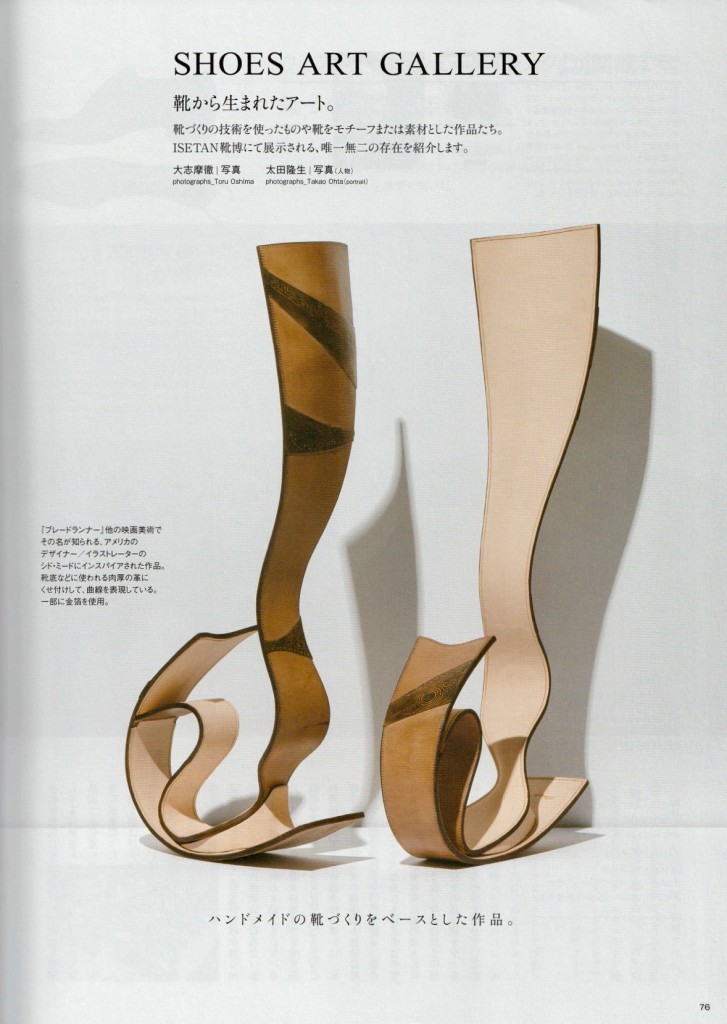
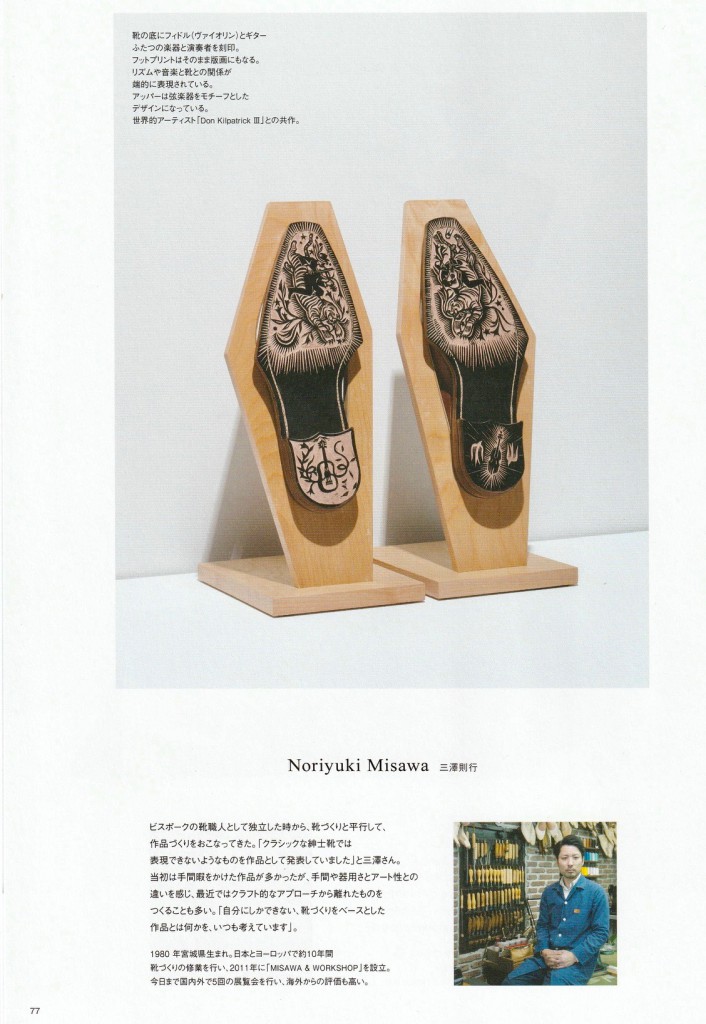
雑誌「LAST / ISETAN靴博 特別号」
-
-
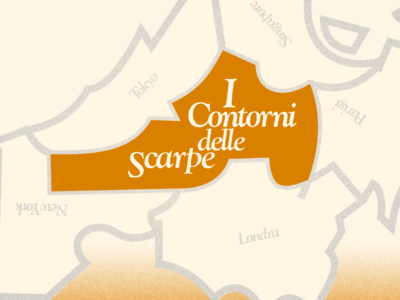
- 「I Contorni delle Scarpe」 Solo exhibition by Noriyuki Misawa
I Contorni delle Scarpe Solo exhibition by Noriyuki Misawa BANCHI VECCHI @banchi_vecchi — Via dei Banchi Vecchi 17, Rome, Italy November 6–8, 2 […]
- 2025.10.17.Fri
-
-
-
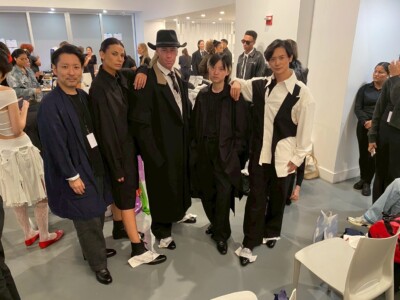
- Collaboration with Studio L7’s WIRT
At NYFW (New York Fashion Week) this September, Studio L7’s WIRT presente […]
- 2025.09.13.Sat
-
-
-
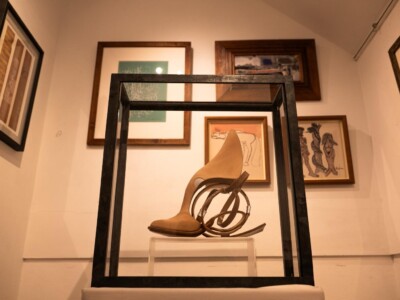
- 月光荘【WALK with HORN】
Noriyuki Misawaの新たな靴のアートピース【WALK with HORN】。 藤田嗣治、与謝野晶子、猪熊源一郎など月光荘の歴史に連なるコレクションとして、月光荘の展示とともにお披露目いたしました。 そして9月2日はレセ […]
- 2025.09.04.Thu
-
-
-
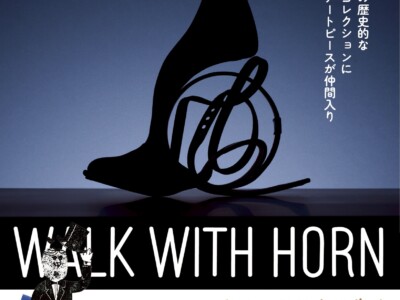
- 【WALK with HORN】 〜ホルンとともに歩く〜
「これは靴なのか、オブジェなのか」見る者が、ふと立ち止まり、考える。身体の延長としての文化、意志、祈り。ミサワノリユキが手がける靴は、ただの装飾ではなく、履き物と文化のあいだに宿る“問い”そのものです。その問いに、月光荘は深く心を打たれました。 昨年発表されたパレットローファーに新たに […]
- 2025.08.07.Thu
-
-
-
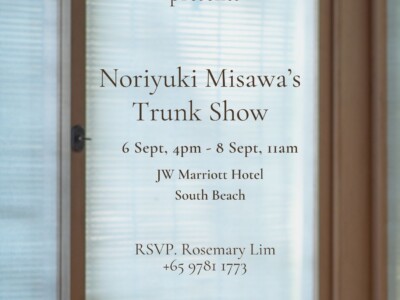
- Bespoke Shoes Trunk Show in Singapore, 2025
Noriyuki Misawa 三澤則行
- 2025.08.07.Thu
-
-
-
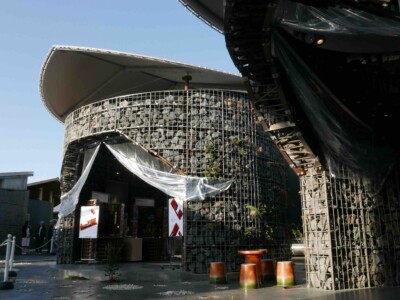
- 「未来の靴のカタチ(The Contours of Future Shoes)」展 at 大阪・関西万博 (Expo 2025)
Noriyuki Misawa 三澤則行
- 2025.05.10.Sat
-
-
-
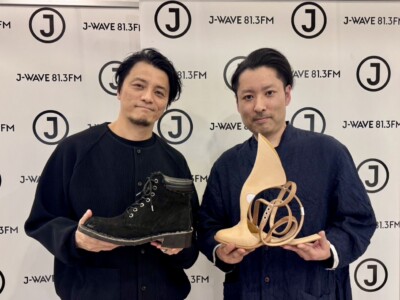
- J WAVE “PILOT THE ORIGINAL”
Kreva さんの番組、J WAVE “PILOT THE ORIGINAL”に出演させていただきました。 Noriyuki Misawa 三澤則行
- 2025.03.21.Fri
-
-
-
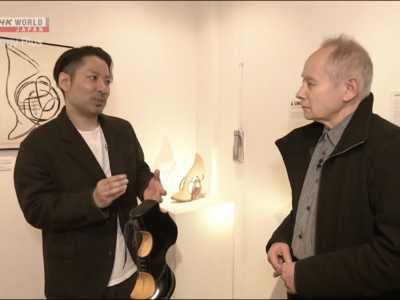
- NHK WORLD “Japanology Plus”
Peter Barakan(ピーター バラカン)さんの番組 NHK WORLD “Japanology Plus”に出演させていただきました。 Noriyuki Misawa 三澤則行
- 2025.03.21.Fri
-
-
-

- YANASE LIFE
YANASE(ヤナセ)様の顧客向け会報誌『YANASE LIFE』に掲載していただきました。 Noriyuki Misawa 三澤則行
- 2025.03.20.Thu
-
-
-
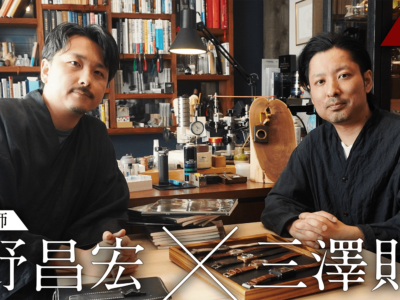
- 【クラフト×漫画】菊野昌宏 × 三澤則行 対談
記事はこちらから Noriyuki Misawa 三澤則行
- 2025.03.14.Fri
-
-
-
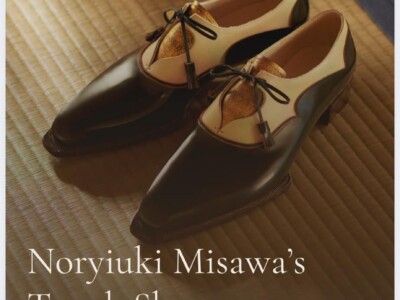
- Bespoke Shoes Trunk Show in Singapore, 2025
Noriyuki Misawa 三澤則行
- 2025.02.15.Sat
-
-
-
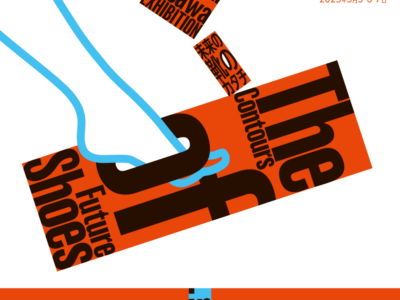
- 「未来の靴のカタチ(The Contours of Future Shoes)」展 at 大阪・関西万博
Visual design by Yukari Sato 三澤則行 Noriyuki Misawa
- 2025.02.04.Tue
-
-
-
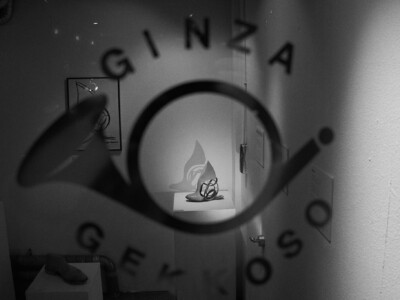
- Solo Exhibition at MAISON GEKKOSO
写真 Chihiro Shizukawa Noriyuki Misawa 三澤則行
- 2025.02.04.Tue
-
-
-
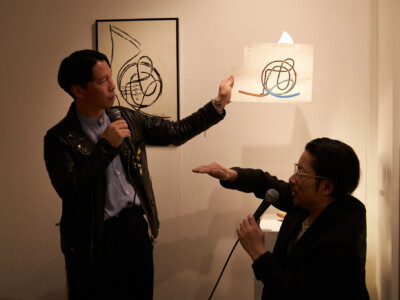
- Opening Party – Solo Exhibition at MAISON GEKKOSO
月光荘 店主 日比康造氏との対談。最新作ホルンの靴について、一枚のスケッチからどのように形になったのか、詳しくお話しさせていただきました。 写真 Chihiro Shizukawa Noriyuki M […]
- 2025.02.01.Sat
-
-
-
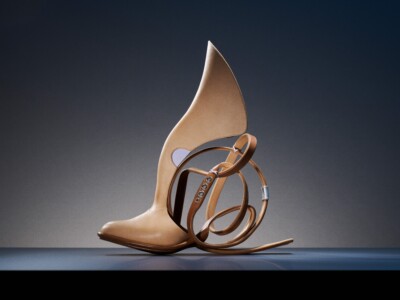
- 新作「ホルンの靴」を月光荘で発表します
MUSIC Ⅵ ~Horn~ Photo : Shinichi Ichikawa 2025年1月20日〜2月2日(13:00~19:00 1月26日は17時、最終日は16時まで) 月光荘画材店 東京都中 […]
- 2025.01.22.Wed
-
-
-
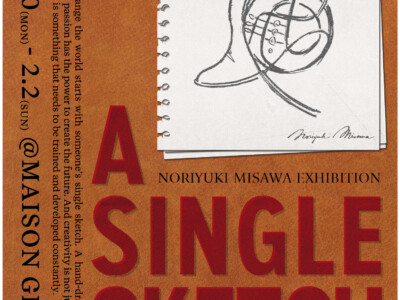
- Solo Exhibition at MAISON GEKKOSO
最新作の「MUSIC Ⅵ ~Horn~ 」を含む、靴のアート作品の展示です。三澤の代表作である「足の巣」や「ネズミにやられた!」などの作品も展示致します。 特に最新作 「MUSIC Ⅵ ~Horn~」 は、最初のスケッチからどのように変化し、進化したのかを、ぜひ実物でご覧ください。 皆様のお越しを心 […]
- 2025.01.15.Wed
-
-
-
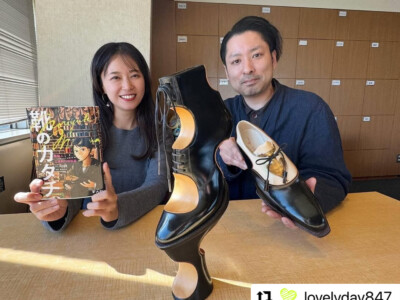
- FM YOKOHAMA “Lovely Day”
近藤さや香さんがナビゲーターのFM ヨコハマ「Lovely Day」に出演いたしました。 Noriyuki Misawa 三澤則行
- 2025.01.09.Thu
-
-
-
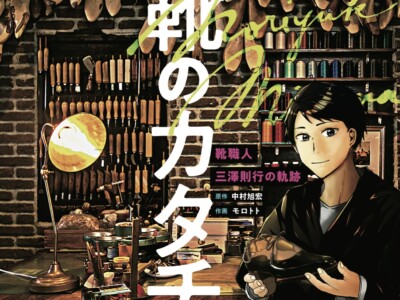
- 「靴のカタチ〜靴職人三澤則行の軌跡〜」の書籍版が販売開始
三澤の半生を描いた「靴のカタチ〜靴職人 三澤則行の軌跡〜」が2022年4月に電子版で配信されましたが、好評を博し2024年12月26日に書籍化、そして販売開始致しました。 書籍版では、電子版収録の全8話に加えて、2024年に開催されたニューヨークコレクションでの出来事や三澤の代表作である靴作品「足の […]
- 2025.01.06.Mon
-
-
-
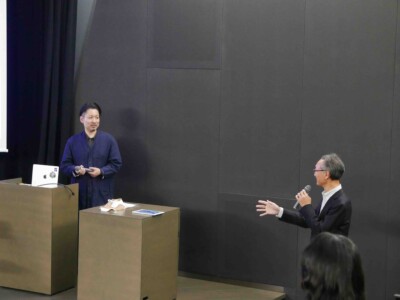
- 温故知新のものづくり学 ー日本工業大学ー
公開講座「温故知新のものづくり学」にて講演させていただきました。 【開催概要】 日 時:12月12日(木)15:00~17:30 会 場:日本工業大学LCセンター マルチメディア教室 授業担当:神 雅彦教授/機械工学科 三澤則 […]
- 2024.12.13.Fri
-
-
-
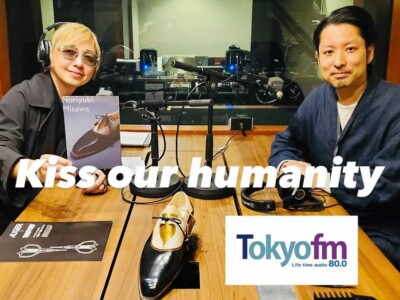
- TOKYO FM 「Kiss our humanity」
デザイナー鈴木曜さんがパーソナリティを務める、TOKYO FM 「Kiss our humanity」に出演させていただきました。 Noriyuki Misawa 三澤則行
- 2024.11.03.Sun
-
-
-
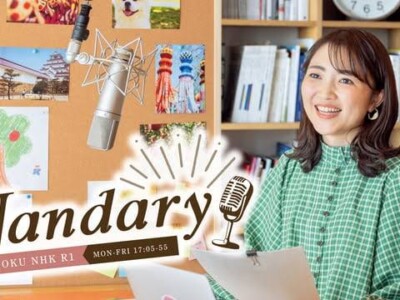
- NHK 仙台「Nandary」
三澤の出身地、宮城県のラジオ番組、NHK仙台「Nandary」に出演させていただきました。
- 2024.10.22.Tue
-
-
-
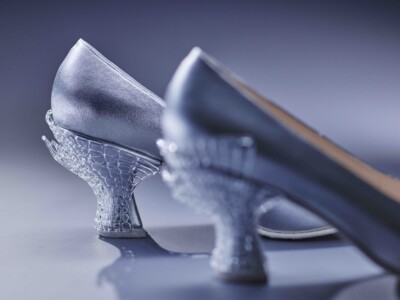
- シンデレラのガラスの靴
シンデレラをテーマにした三菱地所レジデンス様のテレビコマーシャルのための靴です。 〜お城での生活をなかなか抜け出すことができないシンデレラ。しかし、ついに彼女はガラスの靴を脱いで新しい場所へと走り出します。〜 シンデレラをお城に閉じ込めていた象徴的なアイテムになるように「 […]
- 2024.09.20.Fri
-
-
-
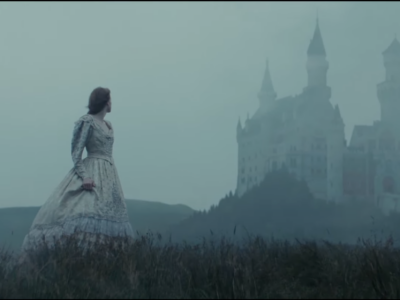
- 三菱地所レジデンス様のCM 「シンデレラ」が公開されました
三菱地所レジデンス様のCM 「シンデレラ」にて、光栄にも Noriyuki Misawa の靴を採用いただきました。 Noriyuki Misawa 三澤則行
- 2024.09.20.Fri
-
-
-
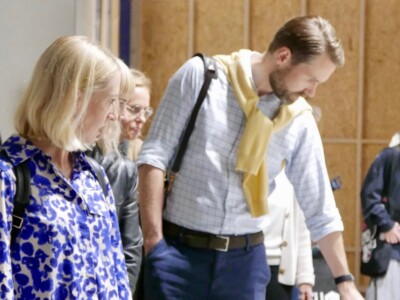
- Mini Showcase at Habitare in Helsinki, Finland
Noriyuki Misawa 三澤則行
- 2024.09.14.Sat
-
-
-
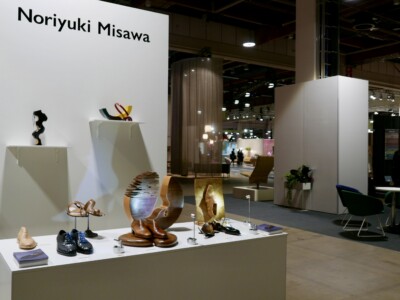
- Mini Showcase at Habitare in Helsinki, Finland
Noriyuki Misawa 三澤則行
- 2024.09.12.Thu
-
-
-
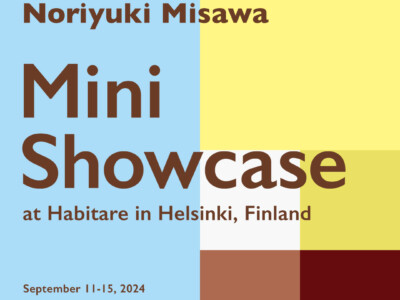
- Mini Showcase at Habitare in Helsinki, Finland
フィンランドのヘルシンキでアートピースのいくつかを展示致します。 Noriyuki Misawa 三澤則行
- 2024.09.06.Fri
-
-
-
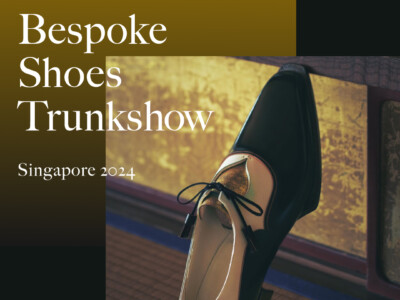
- Bespoke Shoes Trunkshow in Singapore
August 2-3 (Sat & Sun) 2024 THE FULLERTON HOTEL 1 Fullerton Square, Singapore, 049178 Appointment : contact@noriyukimisawa.com Noriyuki Mis […]
- 2024.06.20.Thu
-
-
-
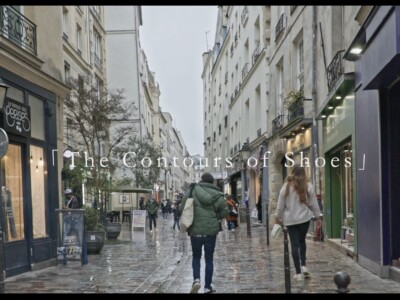
- Noriyuki Misawa Solo Exhibition in Paris (靴職人三澤則行 パリ個展)
Noriyuki Misawa 三澤則行
- 2024.04.01.Mon
-
-
-
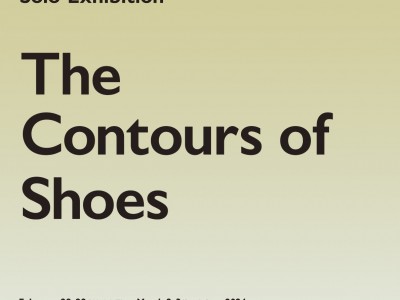
- Solo Exhibition in Paris
Noriyuki Misawa 三澤則行
- 2024.02.24.Sat
-
-
-
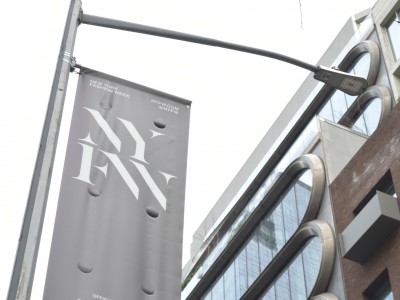
- Exhibition at New York Fashion Week(ニューヨークコレクション)
ニューヨークコレクション(New York Fashion Week F/W )の会場で三澤の靴のアート作品の数々を展示いたしました。 Noriyuki Mis […]
- 2024.02.19.Mon
-
-
-
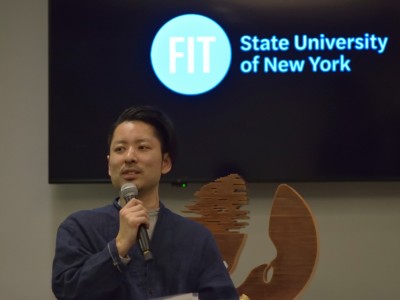
- ニューヨークファッション工科大学 (FIT)
2024年2月8日、ニューヨークファッション工科大学 Fashion Institute of Technology (FIT) で、Brooklyn Shoe Space 主催のイベントで講演させていただきました。 お話した内容は三澤のビスポークの靴づくり、靴のアート作品製作と展示活 […]
- 2024.02.19.Mon
-
-
-
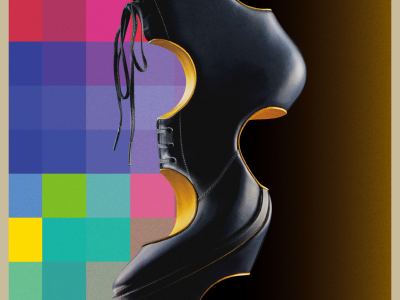
- Exhibition at New York Fashion Week & Paris Fashion Week
Noriyuki Misawa 三澤則行
- 2024.01.16.Tue
-
-
-
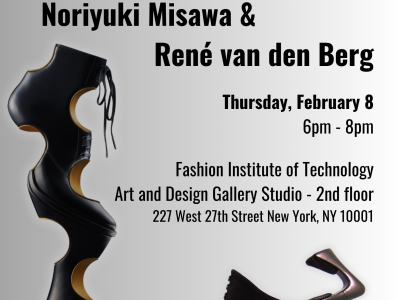
- SHOE TALKS at Fashion Institute of Technology (FIT) ニューヨークファッション工科大学
2月8日、ニューヨークファッション工科大学 Fashion Institute of Technology (FIT) で、Brooklyn Shoe Space 主催のイベントでRenéさんと講演します SHOE TALKS with Noriyuki Misawa & René van […]
- 2024.01.16.Tue
-
-
-
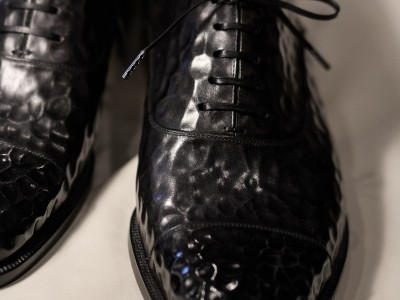
- RIVER 青山
新作「Copper」の受注会をセレクトショップ「RIVER 青山」さんにて開催いたします。皆様のお越しをお待ちしております。 Photo by Ryuhei Komura ーーーーーーーーーーーーーーーーーーーーーー […]
- 2023.11.08.Wed
-
-
-
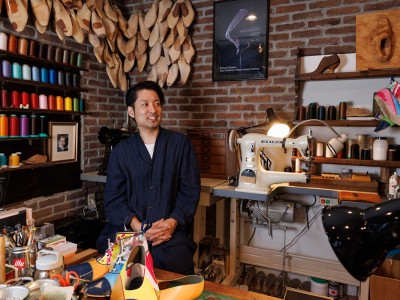
- PARCO JOURNAL
https://journal.parco.jp/news/?id=1205 Noriyuki Misawa / 三澤則行
- 2023.11.04.Sat
-
-
-
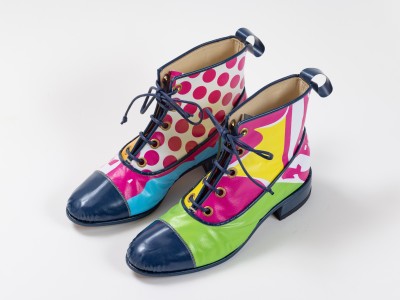
- 「Noriyuki Misawa × PARCO」
https://online.parco.jp/shop/c/cs028685/?utm_medium=parcojournal&utm_source=journal.parco.jp&utm_campaign=1205&_ga=2.244185349.1294 […]
- 2023.11.01.Wed
-
-
-
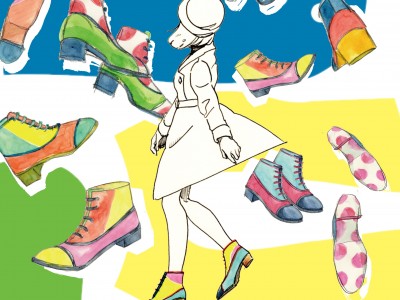
- 「Noriyuki Misawa × PARCO」 coming soon…
Illustration by 工田春(Haru Takumida) Noriyuki Misawa 三澤則行
- 2023.10.15.Sun
-
-
-
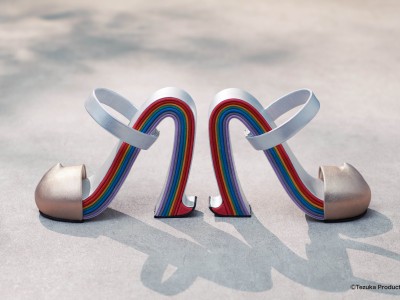
- NEXT ATOM for the future Produced by #AAAA
Noriyuki Misawa 三澤則行
- 2023.08.08.Tue
-
-
-
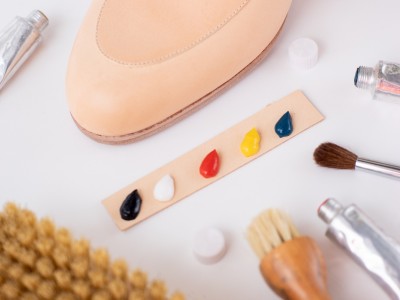
- Shoeshine Palette
以下の日程で受注会を開催いたします。 ・2023年8月19日(土)Brift H 青山店 (東京都港区南青山6-3-11 PAN南青山204) ・2023年8月20日(日)月光荘画材店 (東京都中央区銀座8丁目7-21 永寿ビル) […]
- 2023.07.08.Sat
-
-
-
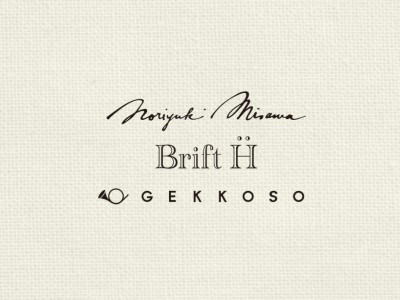
- Shoeshine Palette (Brift H × 月光荘 × Noriyuki Misawa )
Noriyuki Misawa 三澤則行
- 2023.06.29.Thu
-
-
-
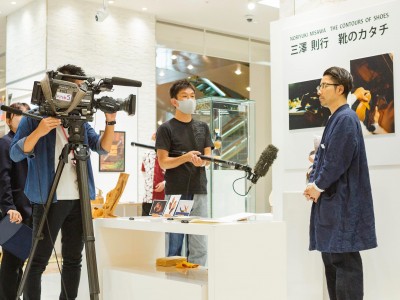
- 仙台 KHB「チャージ」
私、三澤の地元仙台での展示。昨年もお世話になった放送局KHB「チャージ」さんに取材していただきました。興味関心を持ってくださった上で取材されると、嬉しくなってたくさん話してしまいます。いつもありがとうございます! Photo by Kohei Okuyama Noriyu […]
- 2023.06.08.Thu
-
-
-
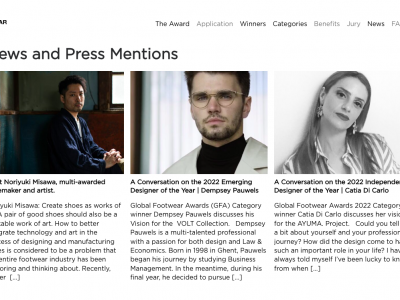
- GLOBAL FOOTWEAR AWARDS
https://www.globalfootwearawards.com/meet-noriyuki-misawa-multi-awarded-shoemaker-and-artist/ Noriyuki Misawa / 三澤則行
- 2023.06.08.Thu
-
-
-
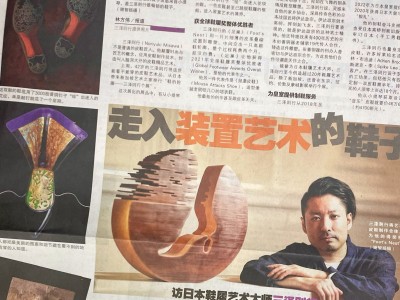
- 聯合早報(Lianhe Zaobao) Singapore
Noriyuki Misawa 三澤則行
- 2023.04.15.Sat
-
-
-
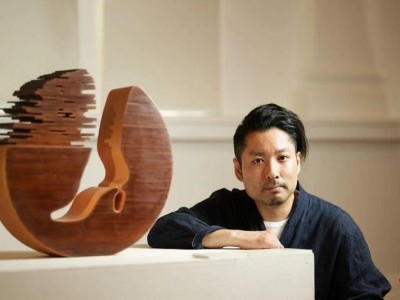
- zaobao sg
Noriyuki Misawa 三澤則行
- 2023.04.01.Sat
-
-
-
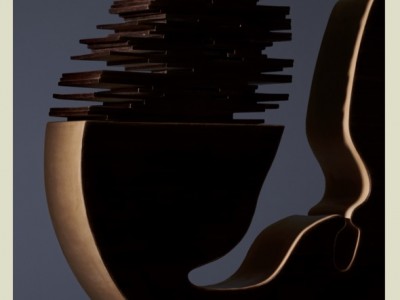
- Solo Exhibition in Singapore
Noriyuki Misawa 三澤則行
- 2023.03.01.Wed
-
-
-
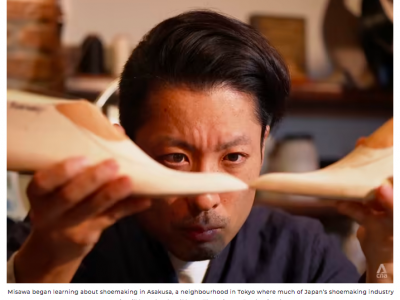
- CNA 「Remarkable Living」(Singapore)
シンガポール、CNAのドキュメンタリー番組「Remarkable Living」に出演いたしました。 https://cnaluxury.channelnewsasia.com/remarkable-living/noriyuki […]
- 2023.02.25.Sat
-
-
-
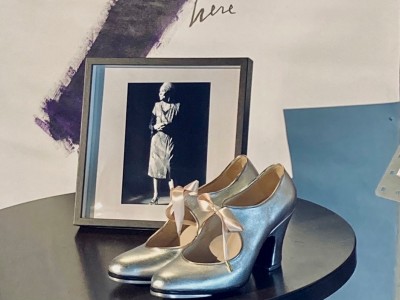
- Tribute to Ms. Mable Lee
世界的タップダンサー熊谷和徳氏(Kazunori Kumagai)の公演「Hear/Here」の中で、レジェンドタップダンサーであるMable Leeをトリビュートし製作したタップシューズを使っていただきました。とても貴重な機会をありがとうございました。 & […]
- 2023.01.22.Sun
-
-
-
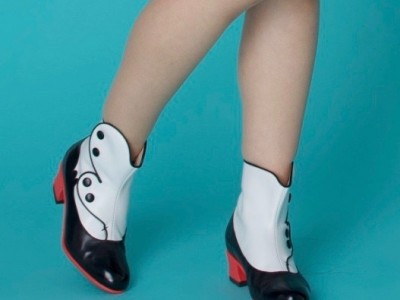
- Collaboration with AKB48
Noriyuki Misawa|三澤則行
- 2022.12.31.Sat
-
-
-
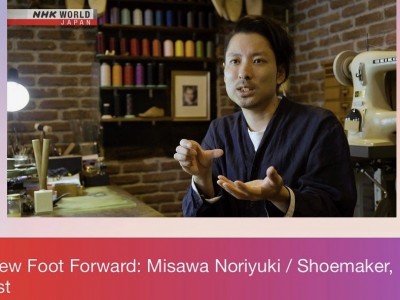
- NHK WORLD「Direct Talk」
https://www3.nhk.or.jp/nhkworld/en/ondemand/video/2058960/ Noriyuki Misawa 三澤則行
- 2022.11.22.Tue
-
-
-
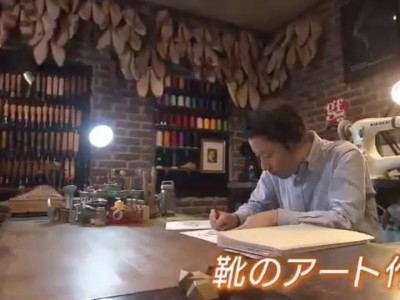
- KHB 東日本放送「チャージ」
三澤の地元、宮城県のKHB 東日本放送「チャージ」で特集していただきました。 Noriyuki Misawa 三澤則行
- 2022.10.18.Tue
-
-
-
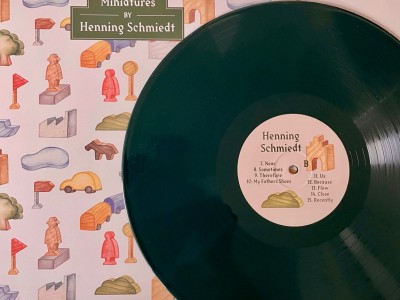
- Henning Schmiedt “My Fathers Shoes”
“My Fathers Shoes” is Dedicated to Noriyuki Misawa. https://www.noriyukimisawa.com/projects/b/ Noriyuki Misawa 三澤則行 […]
- 2022.10.10.Mon
-
-
-
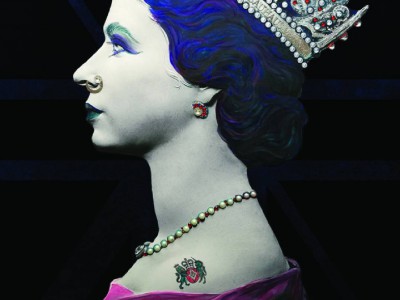
- StART Art Fair Seoul 2022
この度、9月1日から6日まで開催される世界的アートイベント「StART Art Fair Seoul」に日本人アーティストとして、そして靴職人としては世界で初めて選出されました。キュレーターはアートプロデューサーの後藤繁雄氏。私の代表作である「足の巣(Foot’s nest)」をはじめとした靴のアー […]
- 2022.08.24.Wed
-
-
-
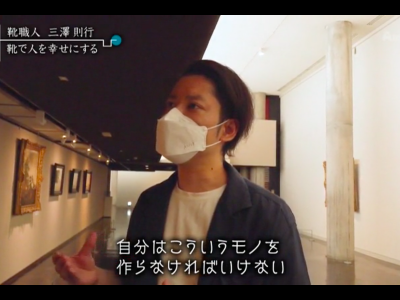
- BS朝日ドキュメンタリー番組「自分流」
たくさんの反響をいただきました。ご覧くださった方々、ありがとうございました。 Noriyuki Misawa 三澤則行
- 2022.08.15.Mon
-
-
-
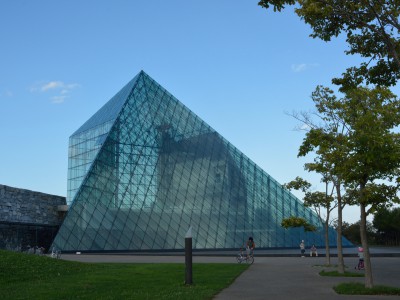
- 三澤則行 個展 ~ 靴のカタチ ~ モエレ沼公園
三澤則行 個展 ~ 靴のカタチ ~ <場所> モエレ沼公園 ガラスのピラミッド アトリウム1、アトリウム2、スペース2 (北海道札幌市東区モエレ沼公園1-1) <日時> 2022年5月26日~29日 11:00~19:00 ※最終日は17時まで <後援&g […]
- 2022.05.09.Mon
-
-
-
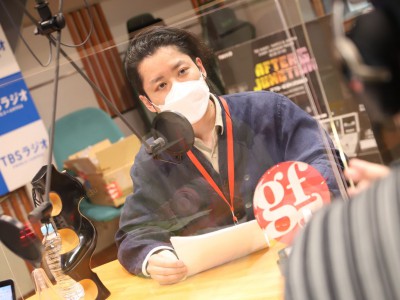
- TBS RADIO 「アフター6ジャンクション」
RHYMESTER 宇多丸さんの TBS RADIO 「アフター6ジャンクション」に出演させていただき、靴アートや漫画化、Global Footwear Awards についてお話しました。 Noriyuki Misawa 三澤則行
- 2022.04.14.Thu
-
-
-
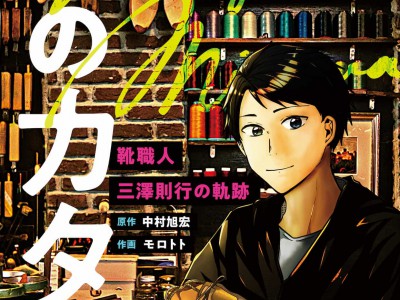
- 「靴のカタチ」〜靴職人三澤則行の軌跡〜
https://manga.thefaninc.co.jp/misawa/ Noriyuki Misawa 三澤則行
- 2022.03.15.Tue
-
-
-
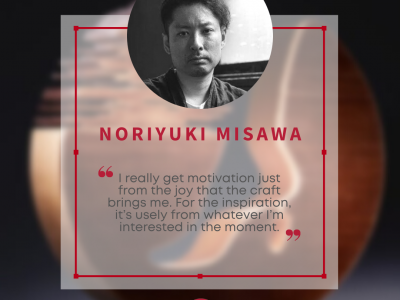
- Global Footwear Awards / In Conversation With: Noriyuki Misawa
February 11, 2022 Global Footwear Awards winner, Noriyuki Misawa, discussed Foot’s Nest , GFA 2021 winning design. Master custom shoemaker Noriyuki M […]
- 2022.03.05.Sat
-
-
-

- Jury’s Comment / GLOBAL FOOTWEAR AWARDS
・ ・ ・ Jury Julia Lebosse What a magnificent and gorgeous piece! In complete cont […]
- 2022.02.10.Thu
-
-
-
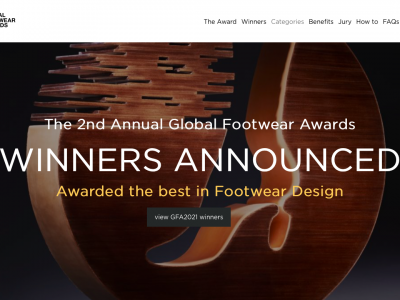
- 「BEST OVERALL WINNER」the GLOBAL FOOTWEAR AWARDS
GLOBAL FOOTWEAR AWARDS で「BEST OVERALL WINNER(総合優勝)」を受賞しました!世界53か国の参加者の中から、芸術部門に出品した靴アート作品『足の巣』が選ばれました。プラダのデザイナーや出版関係者など30名の審査員に評価いただきました。大変光栄です。 I won […]
- 2022.02.08.Tue
-
-
-
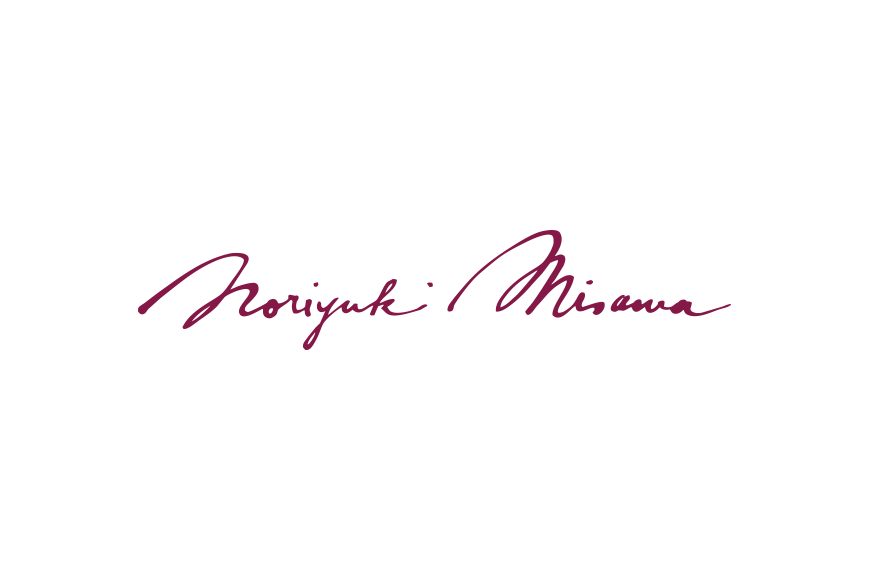
- 日本経済新聞(NIKKEI newspaper)
GlobArtisan(グローバルチザン=世界職人)として掲載していただきました。 https://www.nikkei.com/article/DGXZQOFK247MX0U1A221C2000000 Noriyuki Misawa 三澤則行
- 2022.02.03.Thu
-
-
-

- InterFM 「Otona no Radio Alexandria」
Robert Harris(ロバートハリス)さんナビゲートの、InterFM 「Otona no Radio Alexandria」に出演させていただきました。 https://radiko.jp/share/?sid=INT&t=20220127110000 […]
- 2022.01.28.Fri
-
-
-
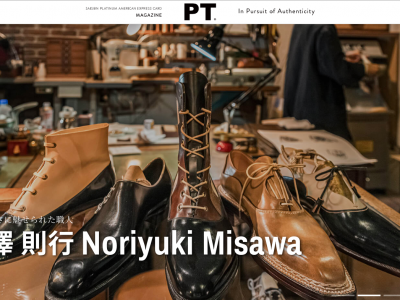
- “PT magazine” for Saison Platinum Card members
セゾンプラチナカード会員用「PT magazine」に掲載していただきました。 Featured in “PT magazine” for Saison Platinum Card members. https://saisonplatinum.com/a_p/ […]
- 2022.01.23.Sun
-
-
-
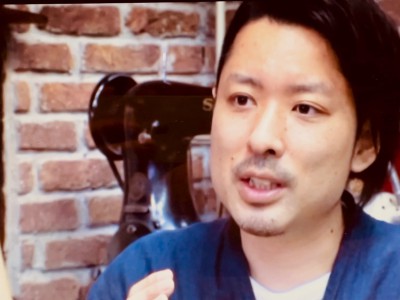
- NHK
靴アート、靴の芸術についてお話させて頂きました。 Noriyuki Misawa 三澤則行
- 2021.10.30.Sat
-
-
-
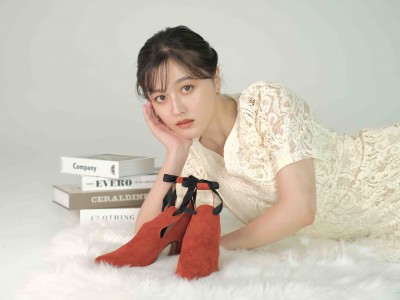
- Noriyuki Misawa × Koharu Kusumi (久住小春)
Photo : 片岡三果 Noriyuki Misawa 三澤則行
- 2021.09.30.Thu
-
-
-
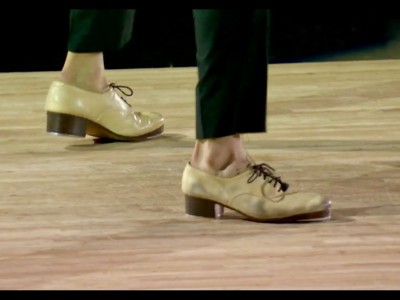
- Tokyo 2020 Olympics opening ceremony ~Shoes by Noriyuki Misawa~
東京2020オリンピック、開会式での熊谷和徳氏のタップダンスパフォーマンスで Noriyuki Misawa(三澤則行)の靴を履いていただきました。 Tokyo 2020 Olympics opening ceremony. Dance performance by Kazunori Kumagai […]
- 2021.08.03.Tue
-
-
-
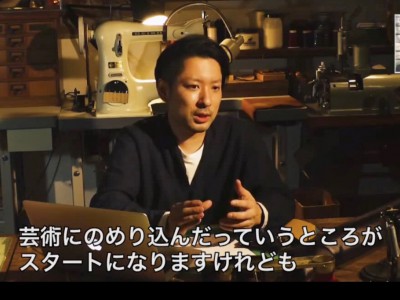
- TOKYO MX TV
靴アート、靴の芸術についてお話させて頂きました。 Noriyuki Misawa 三澤則行
- 2021.07.30.Fri
-
-
-

- Delivery – Foot’s nest(足の巣)
本日、靴のアート作品をお客様の新居(Tatsuro Sasaki Architects)に納品させていただきました。美術館のような空間に飾っていただけて光栄です。 Foot’s nest(足の巣): Noriyuki Misawa(三澤則行)
- 2021.06.17.Thu
-
-
-
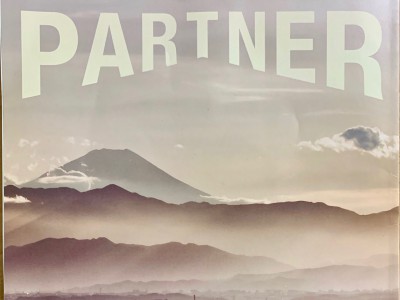
- 三菱UFJニコス「PARTNER」
三菱UFJニコス会報誌「PARTNER」6月号に掲載していただきました。 「最先端の東京仕事」特集に、靴職人/アーティスト 三澤則行(Noriyuki Misawa)を選んでいただきました。
- 2021.05.25.Tue
-
-
-
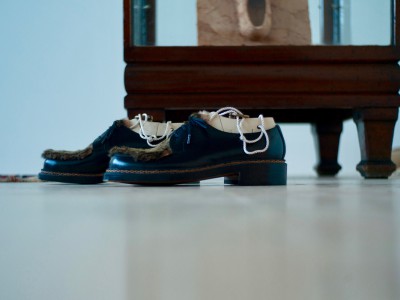
- Exhibition at gallery ATELIER
2月6日にオープンする南青山のギャラリー「gallery ATELIER」。光栄なことにその第一回目の展示・受注会に選んでいただきました。この展示会のための渾身の新作「オオカミ」(履く靴です)の発表に加え、5点ほど過去作品の展示も行います。三澤在廊は6、7、13日の13:00~17:0 […]
- 2021.02.05.Fri
-
-
-
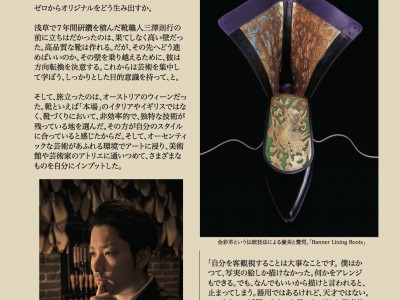
- Shoes That Jump Toward the Future 未来へ跳ぶ靴
靴職人、そして靴アート作家(アーティスト)としての三澤則行のキャリアや活動を取材していただき、コピーライター松塚しのぶさんに書いていただきました。カンヌ映画祭での展示までの苦悩や、シド・ミード氏へのトリビュート作品についてなど、ぜひご覧ください。
- 2020.12.18.Fri
-
-
-
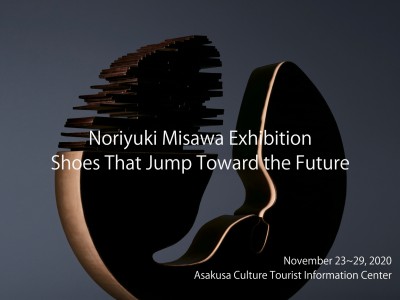
- <日本の靴150年記念イベント> Noriyuki Misawa Exhibition
<日本の靴150年記念イベント> 三澤則行 作品展 ~ 未来へ跳ぶ靴 ~ Noriyuki Misawa Exhibition in Tokyo ~ Shoes That Jump Toward the Future ~ <主催> クツミライ・パートナーズ シューフィル […]
- 2020.11.08.Sun
-
-
-
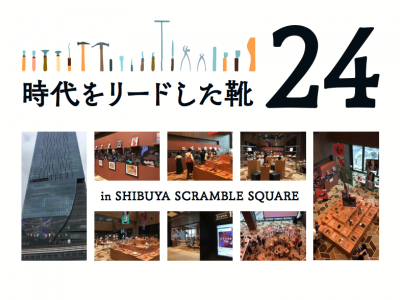
- 「時代をリードした靴 24」at SHIBUYA SCRAMBLE SQUARE
日本の靴150周年のイベントがSHIBUYA SCRAMBLE SQUARE で9/19(SAT)~20(SUN)に開催されました。「時代をリードした靴 24」に三澤の作品”Decorated Outsole(靴底の装飾)”が選出され展示していただきました。ご来場いただいた皆様、そして […]
- 2020.09.23.Wed
-
-
-
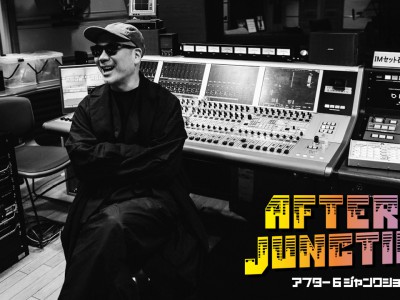
- TBS RADIO 「アフター6ジャンクション」
RHYMESTER 宇多丸さんの TBS RADIO 「アフター6ジャンクション」に出演させていただきました。今回は2回目の出演でしたのでリラックスしてたくさんお話させていただきました。こちらから視聴可能です。 世界のセレブが惚れる靴作家・三澤則行が提案する […]
- 2020.08.21.Fri
-
-
-
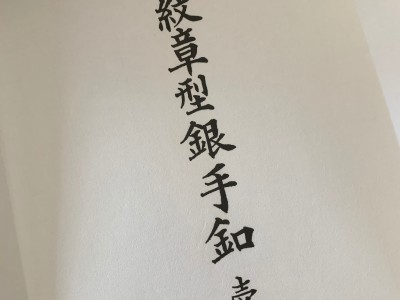
- 天皇皇后両陛下から「御紋付銀手釦」を賜りました
2020年7月30日、大変光栄なことに天皇皇后両陛下から「御紋付銀手釦」を賜りました。 It is a great honor to receive from their Majesties the Emperor and Empress. これからも製作に励み、皆様のご期待に添えるものをお履きいた […]
- 2020.08.05.Wed
-
-
-
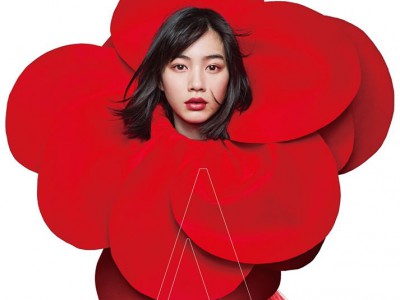
- FA magazine
「つぎを。」をテーマに挑み続けるアーティストとして掲載させて頂きました。 靴職人、アーティスト Noriyuki Misawa(三澤則行) &nb […]
- 2020.05.18.Mon
-
-
-
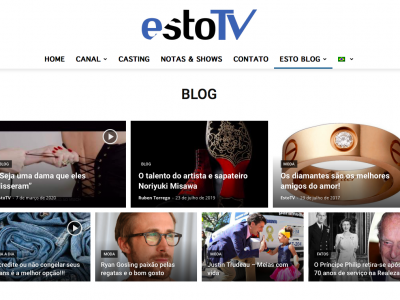
- Brazil 「esto TV」にご紹介いただきました
Ruben Torrego 氏がホストを務めるブラジルの「esto TV」にご紹介いただきました。 内容に関連する記事はこちらからご覧いただけます。 O talento do artista e sapateiro Noriyuki Misawa   […]
- 2020.03.29.Sun
-
-
-
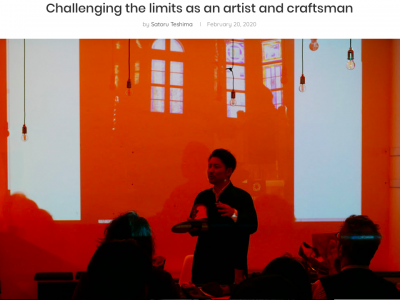
- NION berlin に記事が掲載されました
Noriyuki Misawa の靴職人、そしてアーティストとしての活動を記事にしていただきました。 詳しくはこちらをご覧下さい。 Challenging the limits as an artist and craftsman
- 2020.03.02.Mon
-
-
-
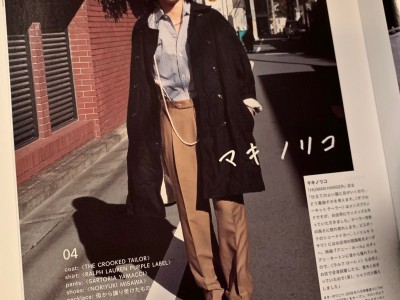
- GINZA 2月号
GINZA 2月号、HUMAN HANGERのマキノリコさんに Noriyuki Misawa の作品を履いていただいております。
- 2020.01.21.Tue
-
-
-
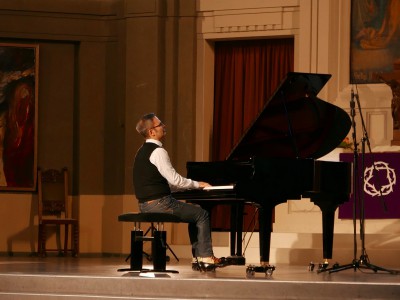
- New project with Henning Schmiedt in Berlin (2nd session)
ヘニング氏との2nd Session 、靴の納品は、ベルリンの歴史的な教会 Philipp Melanchthon Kirche を舞台に行われた。   […]
- 2019.12.18.Wed
-
-
-
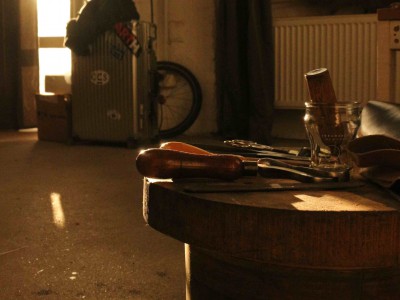
- New project with Henning Schmiedt in Berlin (Shoemaking)
ヘニング氏との1st Session後すぐに靴の製作に入る。 ベルリンの地で、ベルリン在住のアーティストたちと同じ空間で作る。 &n […]
- 2019.10.18.Fri
-
-
-
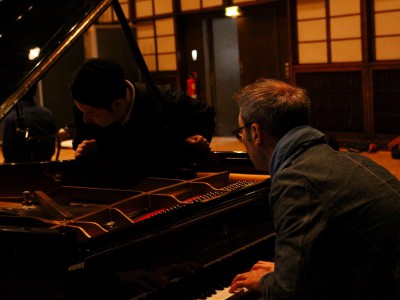
- New project with Henning Schmiedt in Berlin (1st session)
ベルリンの「Haus des Rundfunks」という歴史的建造物の中で、三澤とヘニング氏の1st Session が始まった。 ・・・ ヘニング氏はこのコラボレーション、三澤のために「Mein Vaters al […]
- 2019.10.15.Tue
-
-
-
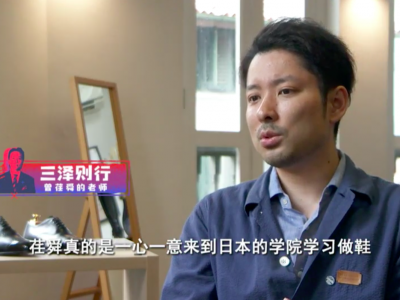
- Singapore TV program
シンガポールのTV番組に出演させていただきました。 I appeared on a Singapore TV program.
- 2019.10.01.Tue
-
-
-
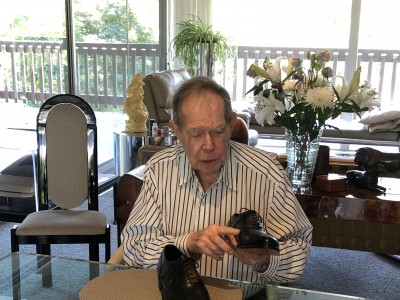
- Message from Mr. SYD MEAD
Message from legend Mr. SYD MEAD!! How happy and honored!! 光栄なことに巨匠シド ミードさんからメッセージを頂戴しました!
- 2019.09.29.Sun
-
-
-
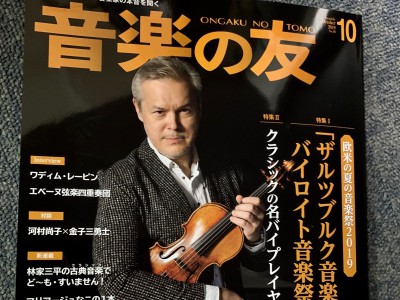
- 音楽の友
「音楽の友」10月号で私とふかわりょうさんの対談が2ページにわたり掲載されています。ぜひご覧ください。
- 2019.09.18.Wed
-
-
-
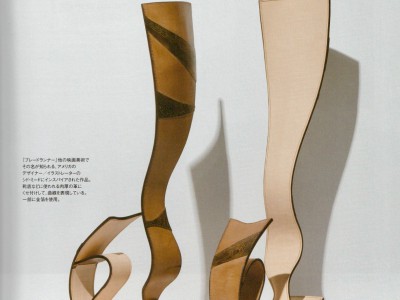
- ISETAN 靴博
2019年9月11日 から 9月16日の期間、伊勢丹新宿「靴博2019」にて私のアートワークを新作から旧作まで展示させていただきます。どうぞお気軽にお越しください。 雑誌「LAST / ISETAN靴博 特別号」
- 2019.08.29.Thu
-
-
-
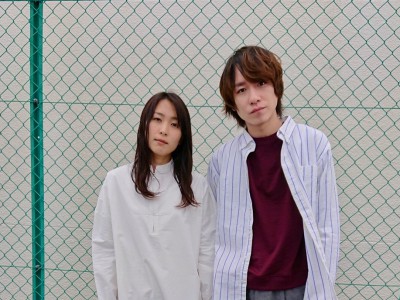
- 女優 黒川芽以様、俳優 落合モトキ様に納品いたしました
- 2019.08.29.Thu
-
-
-
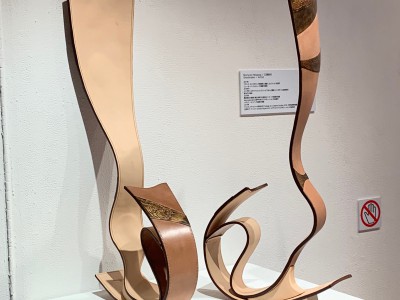
- SYD MEAD Tribute work (shoes) at AXIS Gallery
「シド・ミード展 PROGRESSIONS TYO 2019」のアフター・イベントに Tribute work (shoes) 展示で参加させていただきました。 【日程】2019年7月19 […]
- 2019.07.22.Mon
-
-
-
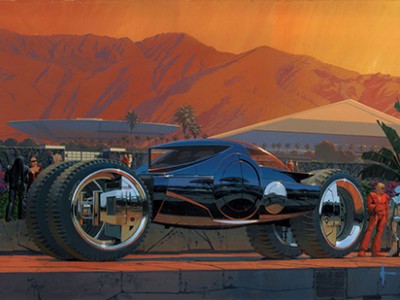
- Syd Mead Exhibition 参加決定
「シド・ミード展 PROGRESSIONS TYO 2019」のアフター・イベントに Tribute work (shoes) 展示で参加させていただきます。 【日程】2019年7月19日(金)~21日(日) OPEN 11:00 – 20:00 (最終日の […]
- 2019.07.15.Mon
-
-
-
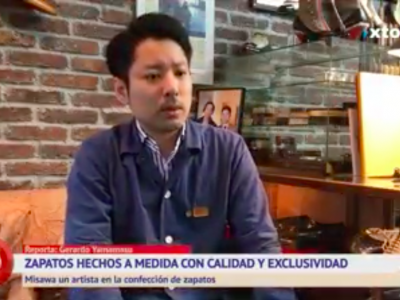
- XTOTV「Punto Vida」(Bolivia)
南米ボリビアのTV局、XTOTVの「Punto Vida」に私の活動を取り上げていただきました。(Reporte Gerardo Yamamasu)ボリビアのほか、ブラジル、ペルー、チリでも放映されました。よろしければこちらからご覧ください。 https://www.facebook. […]
- 2019.07.01.Mon
-
-
-
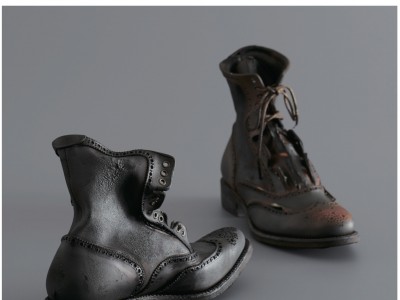
- Pen Magazine International (France)
Pen Magazine International(フランス)に掲載していただきました。 Featured in「Pen Magazine International (France)」. https://pen-online.com/ &n […]
- 2019.06.01.Sat
-
-
-
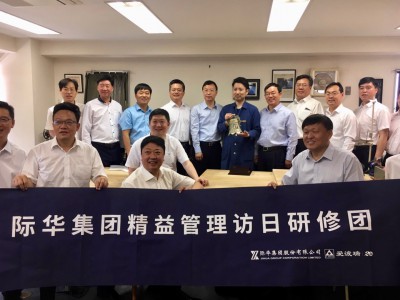
- 新興際華集団株式会社(中国)
大変光栄なことに中国の企業、新興際華集団株式会社のグループ取締役様16名が当工房と教室を研修、見学にいらっしゃいました。
- 2019.05.20.Mon
-
-
-
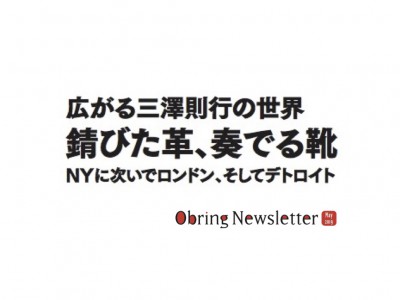
- Obring Newsletter
Featured in「Obring Newsletter」 靴ジャーナリスト大谷知子さんの「Obring Newsletter」に掲載していただきました。 *申し訳ございませんが記事は会員向けのため、荒い画像の紹介とさせていただきます。
- 2019.05.11.Sat
-
-
-
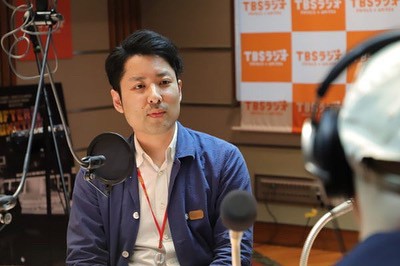
- TBS RADIO 「アフター6ジャンクション」
RHYMESTER 宇多丸さんの TBS RADIO 「アフター6ジャンクション」に出演させていただきました。宇多丸さんとは靴を製作させていただいた10年ぶりの再会となりました。
- 2019.03.27.Wed
-
-
-
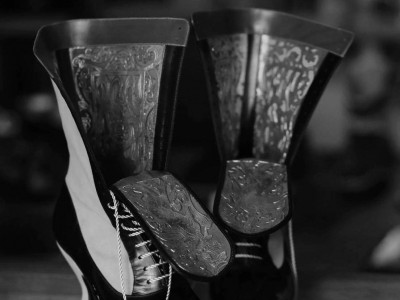
- CLUTCH Magazine
Featured in CLUTCH Magazine. CLUTCH Magazineに9ページにわたり掲載していただきました。
- 2019.02.27.Wed
-
-
-
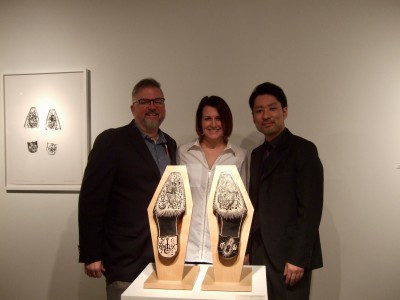
- Collaboration with Don Kilpatrick at M Contemporary Art in Detroit, USA
About Donald Kilpatrick III Donald Kilpatrick III earned his M.A. in Illustratio […]
- 2019.01.18.Fri
-
-
-
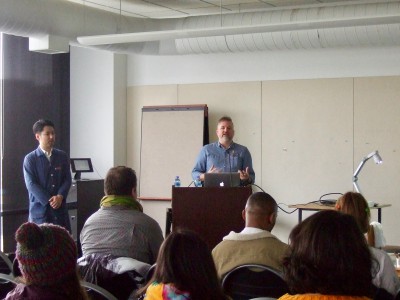
- Special course at College for Creative Studies (CCS) in Detroit, USA
Department of Illustration With Professor Don Kilpatrick III
- 2019.01.18.Fri
-
-
-
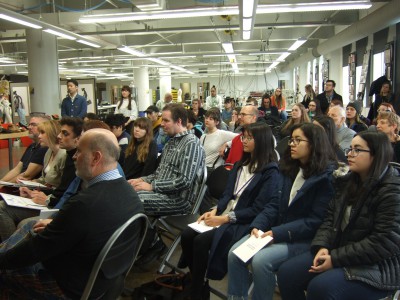
- Special course at College for Creative Studies (CCS) in Detroit, USA
Department of Fashion Accessories Design
- 2019.01.17.Thu
-
-
-
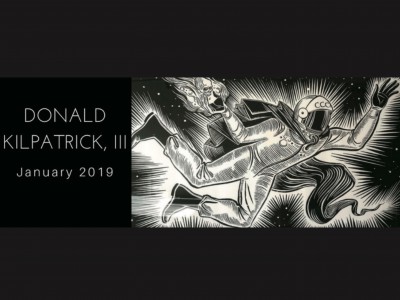
- Collaboration with Don Kilpatrick at M Contemporary Art in Detroit, USA
DONALD KILPATRICK III COLLABORATES WITH RENOWNED SHOE DESIGNER NORIYUKI MISAWA Noriyuki Misawa designed and created a shoe inspir […]
- 2019.01.05.Sat
-
-
-
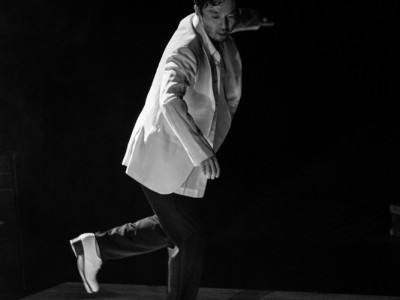
- Tap Shoes for Kazunori Kumagai
ニューヨーク在住の世界的タップダンサー、熊谷和徳氏にタップシューズを愛用いただいております。
- 2019.01.04.Fri
-
-
-

- HER WORLD MAGAZINE
Featured in HER WORLD magazine. HER WORLDマガジンに掲載していただきました。
- 2018.12.17.Mon
-
-
-
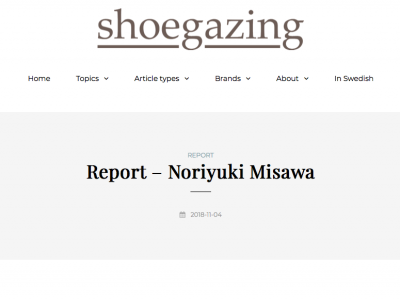
- shoegazing blog (Sweden)
スウェーデンの有名ブログ「shoegazing blog」に掲載していただきました。 Report – Noriyuki Misawa
- 2018.11.09.Fri
-
-
-
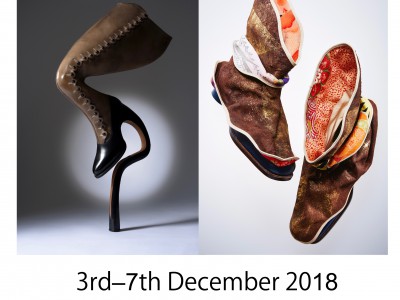
- Noriyuki Misawa Solo Exhibition in London
I was largely captivated by the functional “formative beauty” rather than the the utility of shoes. I strive to continuously evolve shoe […]
- 2018.11.09.Fri
-
-
-
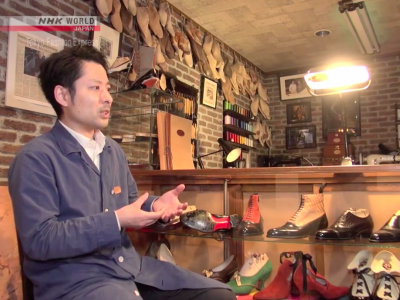
- NHK WORLD 「TOKYO FASHION EXPRESS」
Pursuing Aesthetic Beauty in Leather Shoes Broadcast on November 5, 2018 Viewable for 6 months. 6か月無料で視聴できます。 https://www3.nhk.or.jp/nhkworld/e […]
- 2018.11.04.Sun
-
-
-
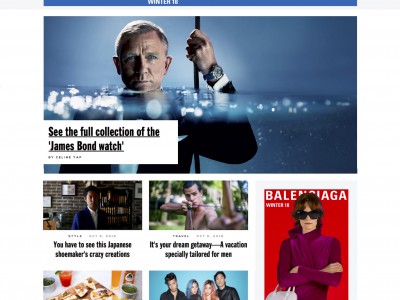
- 「You have to see this Japanese shoemaker’s crazy creations」by Esquire Magazine (Singapore)
Interview with Noriyuki Misawa, shoemaker
- 2018.10.12.Fri
-
-
-
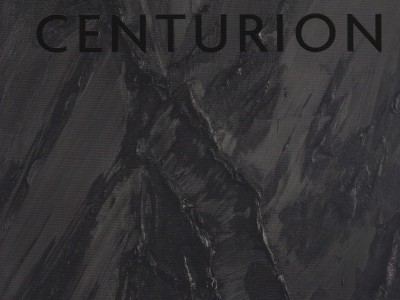
- 『CENTURION』
アメリカンエキスプレス、プラチナカード会員向けマガジン『CENTURION』summer に掲載して頂きました。また、光栄にも特集の表紙に選んで頂きました。 Featured in 『CENTURION』summer. (American Express, Platinum card […]
- 2018.07.01.Sun
-
-
-

- PATTI CAKE$
主演のDanielle Macdonaldさんと。
- 2018.06.01.Fri
-
-
-
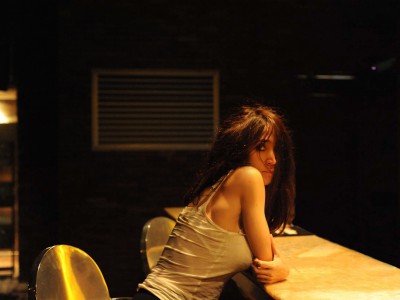
- Noriyuki Misawa Solo Exhibition in TOKYO
Collaboration with STEPHANIE CORNFIELD (NOMADIC MIRRORS) The photos will be exhibited at Noriyuki Misawa solo exhibition at Asakusa Culture Tou […]
- 2018.03.24.Sat
-
-
-
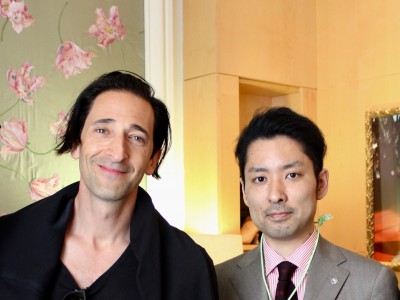
- エイドリアン・ブロディ様にご注文いただいた靴が完成しました。
映画「戦場のピアニスト」などで知られるハリウッド俳優のエイドリアン・ブロディ様にご注文いただいた靴が完成しました。 とても光栄に思います。 Shoes ordered by Hollywood actor Adrien Brody, known for the movie “The Pianist& […]
- 2018.02.09.Fri
-
-
-
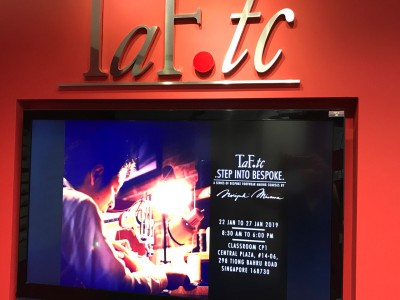
- Special shoemaking course and talk event at TaF.tc in Singapore.
Misawa held special classes and talk shows at Singapore’s fashion school “TaF.tc” from January 22 to 27, 2018. 2018年1月22〜27の期間、シンガポ […]
- 2018.01.30.Tue
-
-
-
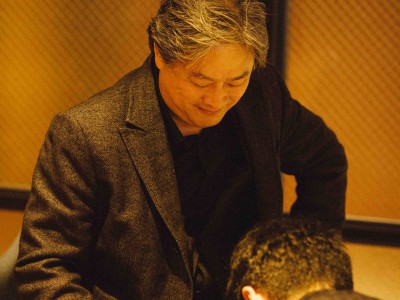
- パクチャヌク(Park Chan-wook / 박찬욱)監督に納品致しました
オールド・ボーイ (2003)、親切なクムジャさん (2005)、渇き (2009)、お嬢さん (2016) などの作品で知られる世界的映画監督のパクチャヌク(Park Chan-wook / 박찬욱)監督に韓国・ソウルで納品致しました。多忙なスケジュールの中、時間と場所を作っていただいた監督のご厚 […]
- 2018.01.06.Sat
-
-
-
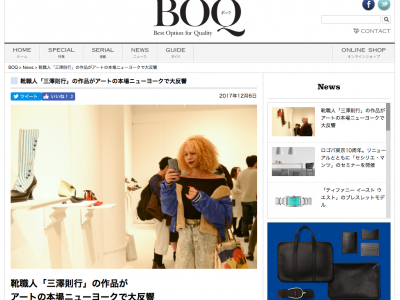
- Web Magazine “BOQ”
WEBマガジン「BOQ」にニューヨーク個展の記事を掲載していただきました。 A article of solo exhibition in New York was posted on WEB magazine “BOQ” . http://boq.jp/201 […]
- 2017.12.06.Wed
-
-
-
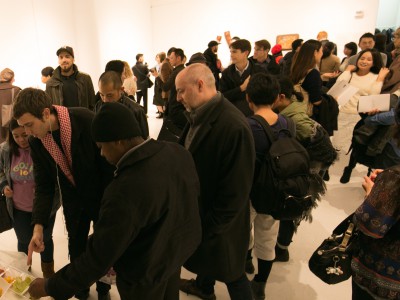
- Noriyuki Misawa Solo Exhibition in New York
私の靴のアート作品が、現代アートの中心地ニューヨークのチェルシーでどう評価されるか? 始まるまではとても不安でしたが、ニューヨークの方々に評価され、アートとして受け入れられたことを大変嬉しく思います。本展がギャラリー史上最も多くのお客様にご来場いただけたことは私たちの誇りです。今後もよ […]
- 2017.11.12.Sun
-
-
-
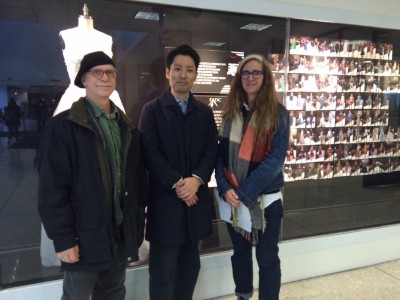
- FIT(Fashion Institute of Technology ニューヨークファッション工科大)に招待いただきました
FIT(Fashion Institute of Technology ニューヨークファッション工科大)のたくさんの生徒さん、そして大変光栄なことに学部長、教授の方々にご来場いただきました。後日、大学へも招待いただき、靴作りに関する様々なお話を伺い、意見交換ができました。近い将来、FI […]
- 2017.11.10.Fri
-
-
-
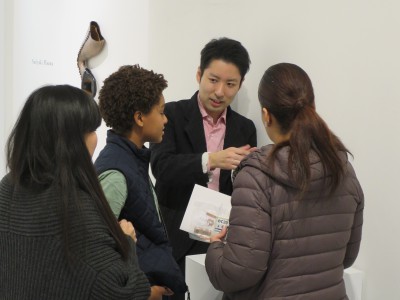
- 俳優 Jaden Michael 様にご来場頂きました。
カンヌ映画祭 コンペティション部門正式出品作品「WONDERSTRUCK」出演のJaden Michael 様にご来場いただきました。忙しいスケジュールの合間を縫って、カンヌでの約束を果たし会いに来てくれた彼に感謝いたします。 「WONDERS […]
- 2017.11.07.Tue
-
-
-
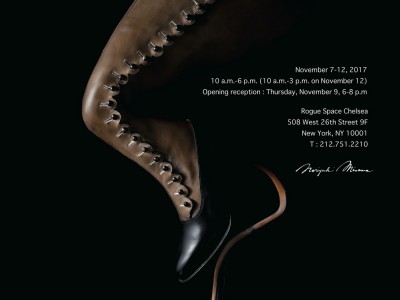
- Noriyuki Misawa Solo Exhibition in New York
- 2017.10.17.Tue
-
-
-
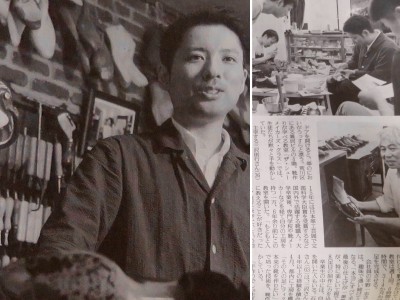
- 読売新聞に掲載していただきました(2017.9.17)
読売新聞に代表三澤の活動、弊社運営の靴学校について掲載していただきました。 The Yomiuri Shimbun posted about Misawa ‘s activities and our shoe school (The Shoemaker’s Class).
- 2017.09.17.Sun
-
-
-
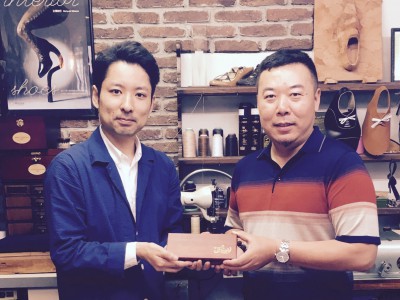
- 中国トップシューズブランドの皆様に講演させていただきました
世界に約3000店舗を持つ中国の靴のトップブランド。光栄なことに、50名の方々に講演をさせていただきました。写真は副オーナーと。 The top brand of Chinese shoes with about 3000 stores in the world. To my honor, I ga […]
- 2017.09.17.Sun
-
-
-
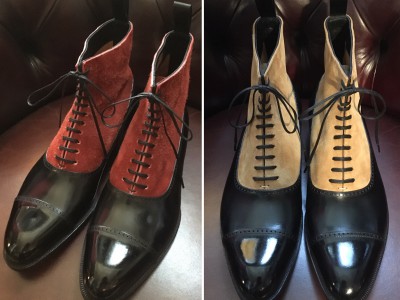
- スパイクリー(Spike Lee)監督にご注文頂いた靴が完成しました
映画「マルコムX」などで知られる巨匠スパイクリー監督にご注文頂いた靴が完成しました。 These shoes ordered by Director Spike Lee known for movies such as 「Malcolm X」 have been completed.
- 2017.08.28.Mon
-
-
-
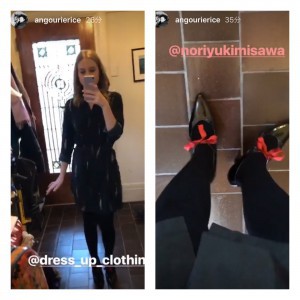
- 女優 Angourie Rice (アンガーリー・ライス)様にご愛用いただいております
カンヌ映画祭コンペティション部門正式出品作品「The Beguiled」や「ナイスガイズ!」 に出演の女優 Angourie Rice (アンガーリー・ライス)様にNoriyuki Misawaの靴をご愛用いただいております。光栄にも彼女のインスタグラムでもご紹介いただきました。 &n […]
- 2017.08.06.Sun
-
-
-

- エイドリアン・ブロディ(Adrian Brody)様にご注文いただきました
「戦場のピアニスト」でアカデミー主演男優賞を獲得した世界的俳優の エイドリアン・ブロディ(Adrian Brody)様にご注文いただきました。 ご注文いただいたモデルは後日、弊社サイト内で発表いたします。   […]
- 2017.06.12.Mon
-
-
-
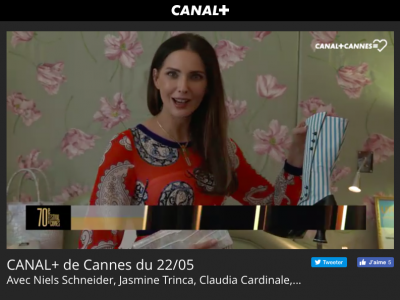
- 多くのメディアに掲載していただきました
フランスのテレビ番組 Canal plus 女優フレデリック・ベル様に Noriyuki Misawaの靴を取り上げていただきました。 Huffington Post STAR’s MEDIA その他、Le Film Franca […]
- 2017.06.11.Sun
-
-
-
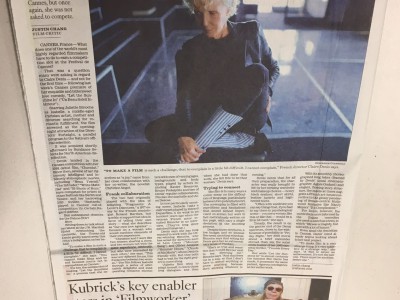
- Los Angeles Times 2017.5.26
Photo by Stephanie Cornfield @nomadic_mirrors フランス人映画監督のクレール ドニ監督clairedenis に履いて頂き、ロサンゼルスタイムズ に掲載していただきました。
- 2017.05.31.Wed
-
-
-
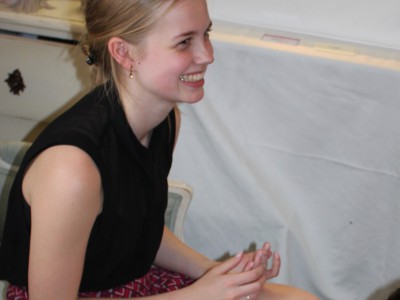
- 女優 Angourie Rice (アンガーリー・ライス)様に靴を納品致しました
コンペティション部門正式出品作品、Sofia Coppola 監督作品「The Beguiled」 に出演の女優 Angourie Rice (アンガーリー・ライス)様に靴を納品致しました。   […]
- 2017.05.24.Wed
-
-
-
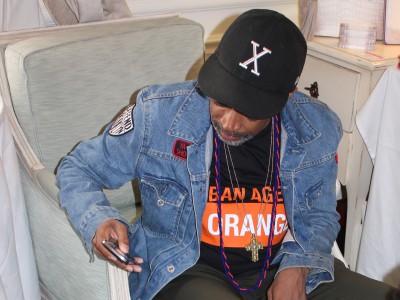
- Spike Lee(スパイク・リー)監督、Park Chan-Wook(パク・チャヌク)監督にご注文いただきました
第70回カンヌ映画祭の顔である審査員の9名。この中から Paolo Sorrentino 様はじめ、4名の方にご来場、ご注文いただきました。 Agnes Jaoui 監督、そしてパクチャヌク監督にご注文いただきました。韓国ノワール映画好きの私が、まさかパクチャヌク監督の靴を作らせていた […]
- 2017.05.24.Wed
-
-
-
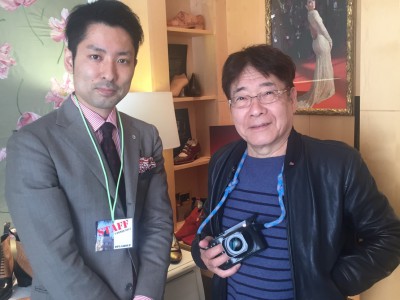
- ハービー山口様にご来場いただきました
世界的写真家のハービー山口様にご来場いただきました。大変光栄なことに私の靴もハービー様流の解釈で撮影していただきました。ハービー山口様、誠にありがとうございました。
- 2017.05.21.Sun
-
-
-
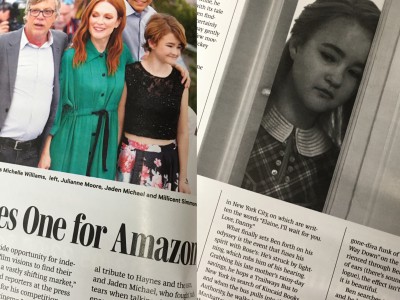
- 女優 Millicent SIMMONDS(ミリセント・シモンズ)様に靴を納品させていただきました
カンヌ映画祭 コンペティション部門正式出品作品「WONDERSTRUCK」主演のMillicent SIMMONDS様に靴を納品させていただきました。 本当に魅力に溢れる女性で会場のスタッフ全員が魅了されました。これからのご活躍が楽しみです。 […]
- 2017.05.20.Sat
-
-
-
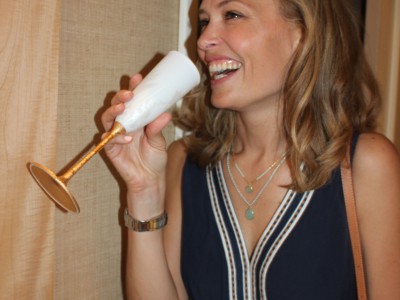
- 多くの著名人にご来場いただいております
Deadpool や ベイマックス 出演の T.J.Miller 様ご夫妻にご来場頂き、奥様で女優の Kate Gorney 様に靴を納品致しました。 女優の Lilou Fogli 様に靴を納品致しました。 アカデ […]
- 2017.05.20.Sat
-
-
-
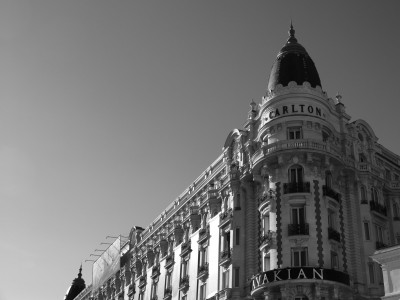
- Exhibition in Cannes 始まりました
InterContinental Carlton Hotel Cannes スイートルームにて、 26日までNoriyuki Misawaのコレクションを展示いたします。
- 2017.05.17.Wed
-
-
-
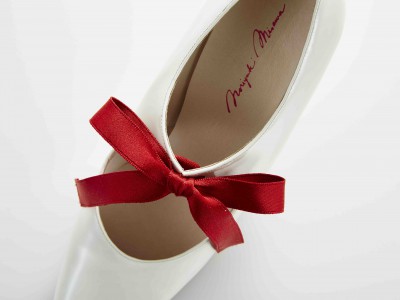
- Exhibition in Cannes
From May 17th to 26th, the collection of noriyuki misawa will be exhibited at InterContinental Carlton Cannes, linked with Cannes Film Festival. 5月17日 […]
- 2017.05.02.Tue
-
